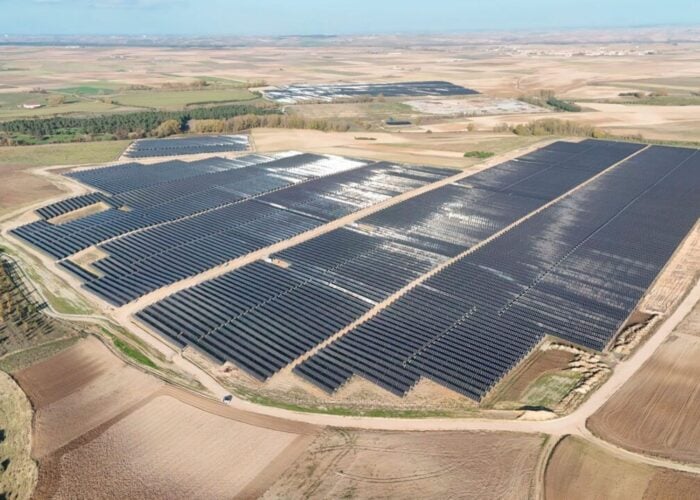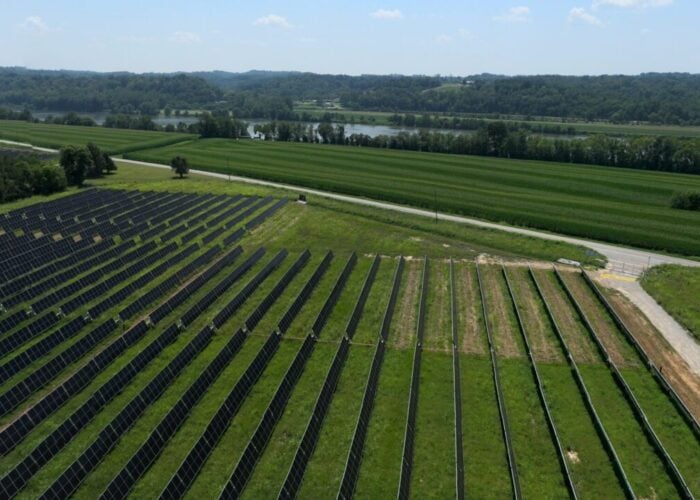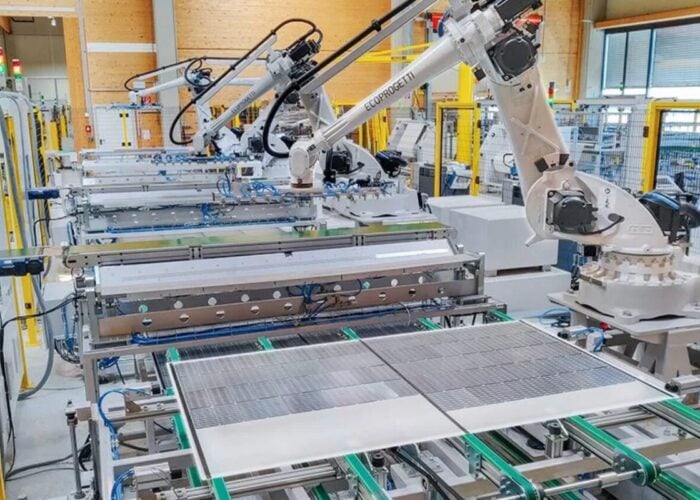Sharp has released reports of a solar cell conversion efficiency that reaches 35.8% using a triple-junction compound solar cell. The company reached its breakthrough as part of a research and development initiative supported by Japan’s New Energy and Industrial Technology Development Organization on the theme of “R&D on innovative solar cells”. Contrasting from the common used silicon-based solar cells, the compound solar cell uses photo-absorption layers, which are made from a composite of two or more elements such as indium and gallium. For the past nine years, Sharp has been researching and developing a triple-junction compound solar cell that reaches high conversion efficiency by stacking three photo-absorption layers.
When it comes to triple-junction compound solar cells, to improve their efficiency it’s important to enhance the crystallinity in each photo-absorption layer. It is equally vital that the solar cell be made of materials that can maximize the effective use of solar energy. In the past germanium was used as a bottom layer because of its ease of manufacturing, but while germanium produces a large amount of current, the majority of what is produced is wasted and therefore not effectively used for electrical energy.
Try Premium for just $1
- Full premium access for the first month at only $1
- Converts to an annual rate after 30 days unless cancelled
- Cancel anytime during the trial period
Premium Benefits
- Expert industry analysis and interviews
- Digital access to PV Tech Power journal
- Exclusive event discounts
Or get the full Premium subscription right away
Or continue reading this article for free
Sharp solved this problem by forming the bottom layer from indium gallium arsenide (inGaA), a matter with high light utilization efficiency. While the process to make such an efficient bottom layer from InGaAs with high crystallinity was difficult, Sharp did just so by using its technology for forming layers. This resulted with the total wasted current being diminished while the conversion efficiency, which had previously been 31.5% in Sharp’s cells, to be increased to 35.8%.
The 35.8% conversion efficiency was confirmed by the National Institute of Advanced Industrial Science and Technology this past September.





